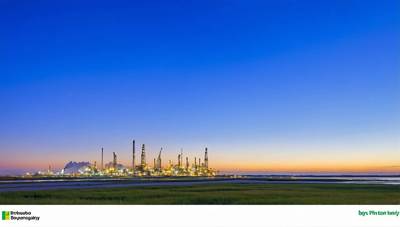BP expects oil demand to grow until 2030, due to a slowdown in energy efficiency gains
BP announced on Thursday that it expects the global oil demand will grow until 2030. This is five years later than their forecast a year earlier. They attributed this to slowed energy efficiency efforts and global carbon emission reductions.
Two scenarios are modeled in the latest Energy Outlook from Shell, an annual report on energy trends to 2050.
The "Current Trajectory' scenario is based upon existing policies and commitments. The "Below 2 Degrees" scenario, which refers to the goal of limiting global heating to less than two degrees Celsius, in line with Paris Agreement, envisages a 90 percent drop in carbon emission levels by 2050 compared to 2023.
The burning of coal, oil and natural gas is the main cause of emissions.
Highlights from the report include:
OIL DEMAND AND OIL PRODUCTION
According to BP's Current Track, the global oil demand will reach 103.4 million barrels a day (bpd), before dropping to 83 millions bpd in 2050.
BP's last-year report had predicted a peak in demand by 2025 of around 102,000,000 bpd. However, slowing gains in efficiency have changed this picture.
Oil demand will increase to 106 million barrels per day by 2035 if energy efficiency improvements are not made.
According to the scenario of Below 2-Degrees, oil demand will peak this year at 102.2 millions bpd and then fall to 33.8 by 2050.
The Current Trajectory shows that U.S. Onshore Production is roughly flat, at 15 million bpd for the first half. Brazil and Guyana will see the biggest increases in 2035, with 5 million bpd apiece and 2 million respectively.
Emissions of Carbon dioxide
The Current Trajectory shows that CO2 equivalent emission levels will remain roughly flat until 2030 and then drop by approximately 25% by 2050 compared to 2023 levels.
Under the scenario of Below 2 Degrees, emissions fall by 90% due to faster decarbonisation among emerging economies.
Demand for Natural Gas and LNG
The Current Trajectory shows that natural gas consumption will reach 4,800 billion cubic meters (bcm), up 17% on current levels by 2040. This is a result of China, India, and other Asian countries and Middle Eastern nations, and then it plateaus.
Imports of Russian pipeline gases by the European Union will fall by about 50%, to 15 billion cubic meters (bcm), and remain at this level for many decades.
The Current Trajectory shows that exports of liquefied gas, which BP measures as a measure of demand for fuel, will increase to around 900 bcm in 2035, with over 50% of these supplies coming from U.S.A. and Middle East.
Shell, a rival of BP, has estimated that the LNG demand in 2040 will be between 630 and 718 millions metric tons per year or 860 to 980 bcm.
ELECTRICITY AND RESOURCES
In the Current Trajectory scenario, global electricity demand will rise to more than 40,000 terrawatt-hours over the next decade. This is an increase of around 40% compared to 2023, with China and India being the main contributors.
By 2050, it will have roughly doubled. This is mainly due to the huge leaps made in electrifying transport. By 2050, wind and solar will account for more than half of all power production.
By 2050, renewables will overtake oil and gas in terms of energy consumption.
(source: Reuters)


